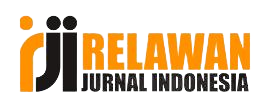Pembangunan Terintegrasi dalam Mewujudkan Kota Pariwisata Bertaraf Internasional: Studi Kasus di Kabupaten Banyuwangi Jawa Timur
Integrated Development in Realizing an International Standard Tourism City: A Case Study in Banyuwangi Regency, East Java
DOI:
https://doi.org/10.21070/jkmp.v2i2.433Keywords:
integrated development, tourism development, international tourism cityAbstract
This study aims to analyze and describe how the integrated development in realizing Banyuwangi as an international tourism city is. The type of research used in this study is a qualitative with analysis descriptive approach. The results of study show that in realizing Banyuwangi as an international tourism city through integrated development, the lokal government of Banyuwangi Regency performs three steps of consolidation, namely improvement of infrastructure for access to the leading tourist destinations, consolidation of lokal cultural wealth, and consolidation of the tourism community. Through such measures, the number of foreign tourist arrivals has increased very significantly from year to year and Banyuwangi received several awards for the accomplishments and contributions in the tourism sector.
References
Ashdiana, I. M. (2014). Penerbangan ke Banyuwangi Tambah, Penumpang Naik. Diakses pada tanggal 7 Oktober 2014 melalui www.travel.kompas.com.
Creswell, J. (1998). Qualitative Inquiry and Research Design. New York: Sage Publications.
International Tourism Partnership. (2004). Tourism and Local Economic Development. London: International Tourism Partnership.
Karyono, A. H. (1997). Kepariwisataan. Jakarta: Gramedia Widiasarana.
Kusbiantoro, D. (2014). Kunjungan Wisatawan di Banyuwangi Diprediksi Naik 75-100 Persen. Diakses pada tanggal 6 Oktober 2014 melalui www.antarajatim.com.
Moleong, L. J. (2000). Metode Penelitian Kualitatif. Bandung: Remaja Rosdakarya.
Patel, Y. et al. (2000). IDP Guide Pack: General Overview. Cape Town: Department of Provincial and Local Government.
Peet, R. dan Hartwick, F. (2009). Theories of Development: Contentions, Arguments, Alternatives. New York: The Guilford Press.
Pemerintah Kabupaten Banyuwangi. (2010). Rencana Pembangunan Jangka Menengah Daerah Kabupaten Banyuwangi 2010-2015. Banyuwangi: Pemerintah Kabupaten Banyuwangi.
Pertiwi, N. L. (2012). Pariwisata Banyuwangi Terkendala di Infrastruktur. Diakses pada tanggal 3 Oktober 2014 melalui www.travel.kompas.com.
Radar Banyuwangi. 27 November 2014. Kunjungan turis asing meningkat. Hlm. 29-39.
Samsuridjal, D. (1997). Peluang di Bidang Pariwisata. Jakarta: Mutiara Sumber Widya.
Spillane, J. (1994). Pariwisata Indonesia: Siasat Ekonomi dan Rekayasa Kebudayaan. Yogyakarta: Kanisius.
Todaro, M. P dan Smith, S. C. (1985). Economic Development in the Third World. New York: McGraw Hill.
Undang-Undang No. 10 Tahun 2009 tentang Kepariwisataan.
Undang-Undang No. 25 Tahun 2004 tentang Sistem Perencanaan Pembangunan Nasional.
Undang-Undang No. 32 tahun 2004 tentang Otonomi Daerah.
United Nations World Tourism Organization. (1993). National and Regional Tourism Planning. London: Routledge.
Widmalm, S. (2008). Decentralization, Corruption, and Social Capital: From India to The West. New Delhi: Sage Publication India.
Williams, S. dan Lew, A. (2014). Tourism Geography: Critical Understandings of Place, Space and Experience. London: Routledge.
















